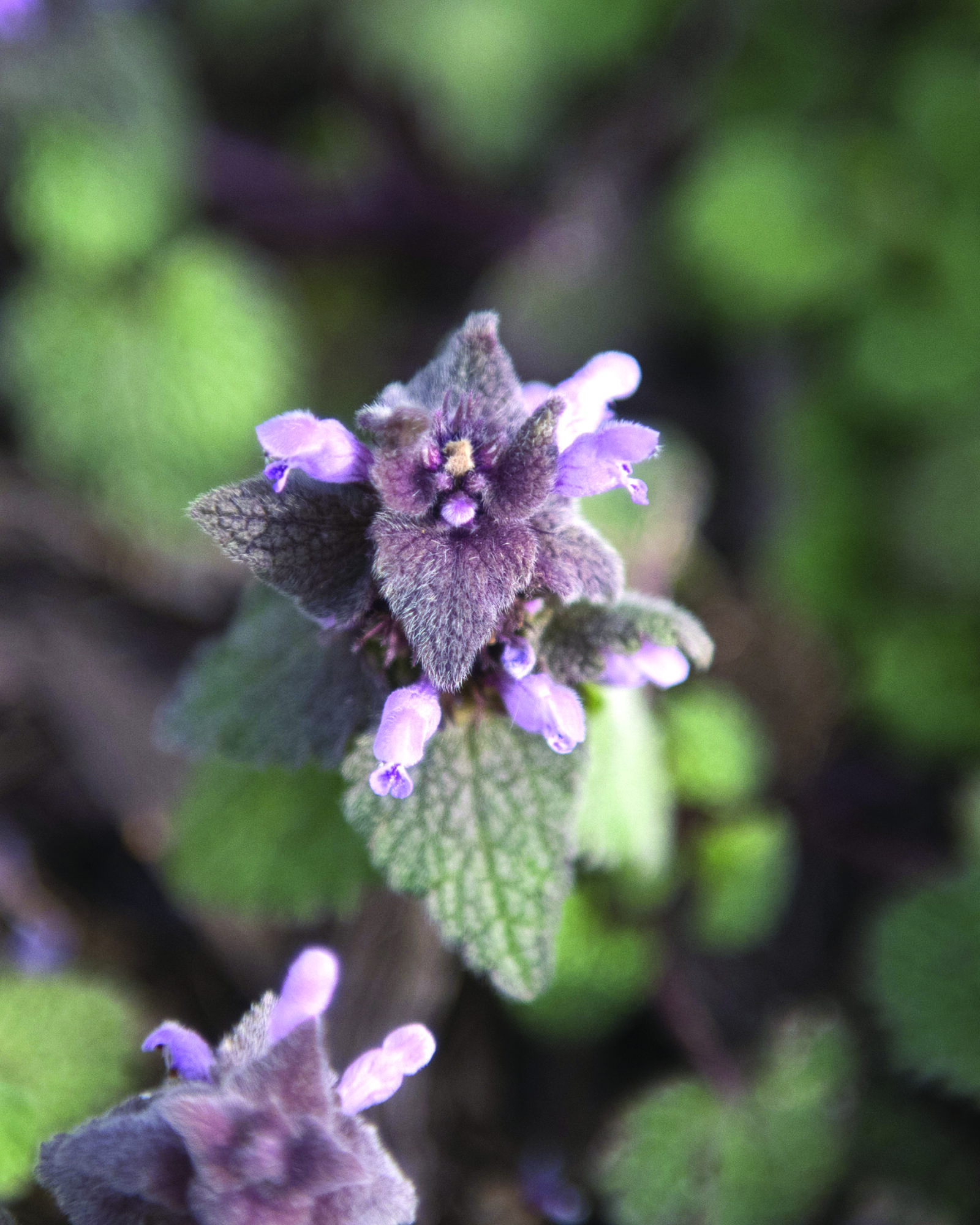Getting a Jump on Your Spring Garden

Written by Patrick Mulrooney | Photos by Joanne Maisano
Even the most experienced gardener can be surprised at the explosion of activity in the garden at this time of the year. Virginia’s unusually warm temperatures have brought a sudden end to winter; it seems that everything is popping out of the ground, both good and bad plants.
Getting bad weeds under control is one of the most important tasks to tackle now, before their numerous flowers turn into thousands of seeds. Three of the most common weeds in our area are sweet bittercress (Cardamine hirsuta), chickweed (Stellaria media), and henbit (Lamium aplexicaule). These plants can wreak havoc on a garden, as they flower early and produce an astounding quantity of seeds. If allowed to complete its life cycle, a single sweet bittercress plant can produce over 600 seeds that will continue to germinate throughout the remainder of the year.
The best way to control these invasive plants is to remove them or spray them with herbicide. Although spraying the weeds with herbicide may seem easier, hand-digging weeds is healthier for the garden and avoids killing the beneficial insects and microbes in the soil. After the weeds are removed, regular monitoring is necessary to keep new weeds from coming back. It is an endless labor of love, but one that will reward the attentive gardener as the season progresses. It is important to note that these weeds should be thrown away and not added to your compost pile, as the seeds are still viable.
Early spring is a good time to fertilize perennials and ornamental shrubs and trees. HollyTone is the choice for acid loving plants, such as members of the holly family, azaleas, and rhododendrons. This is also a good time to fertilize yews and boxwoods. Contrary to common belief, these plants are not acid loving and prefer a specially formulated pH that is close to 7.0. Ask your local nursery if they have this less-than-common fertilizer in stock.
Early spring sees the emergence of some insects that can damage plants. One in particular is the leaf miner, which can destroy American boxwoods. Imidacloprid or an insecticide spray that contains bifenthrin or carbaryl are two methods to control this pest. Imidacloprid is a systemic pesticide sold under the name Merit, which does not require precise timing and should be applied in mid to late April. The insecticide sprays are a little more difficult as they need to be applied when the adult flies emerge.
Spring is an excellent time to add mulch to gardens to reduce the growth of weeds, retain moisture, add nutrients to the soil and an attractive top dressing to gardens. There is a type of mulch available for every taste, including natural hardwood, dyed hardwood, pine bark, and pines fines. Karbon is a trademarked brand of leaf mulch that is available in this area. My personal favorite mulch is made at home from shredded oak leaves, broken down by time and microbes to produce a rich black amendment that is good for every garden, both flower and vegetable. The contrast of the dark mulch against the emerging colors of the plants is a glorious sight.
While we have discussed several tasks to keep the garden in control, there is another crucial strategy that, once begun, requires very little work at all: native plants.
By far, one of the most powerful allies in this fight are the native plants that have been a part of this ecosystem for millennia. These ancient friends are quick to announce the coming of spring and will spread quickly if the appropriate soil is present. In my garden, many spring woodland plants are starting to pop up: celandine poppy (Styllophorum diphyllum) and lungwort (Pulmonaria) already are showing their yellow, pink, and blue flowers, respectively. Also emerging are Virginia bluebells (Mertensia), wild columbine (Aquilega), and bleeding heart (Dicentra spectabilis, native to East Asia but with many native Dicentra cousins), their flowers all stunning against the backdrop of the primordial ferns and glossy mayapple that is free to wander where it chooses.
Those lovely plants seem to come out of nowhere in the early spring. Their appearance, accomplished on their own power and on their own schedule, is the gardener’s reward for doing the jobs that only the gardener can do: manage the weeds and pests, add some mulch, and make sure plants have adequate water. It’s a prize that is well worth the effort. Have fun in your garden! ML
This article first appeared in the April 2020 issue of Middleburg Life.




